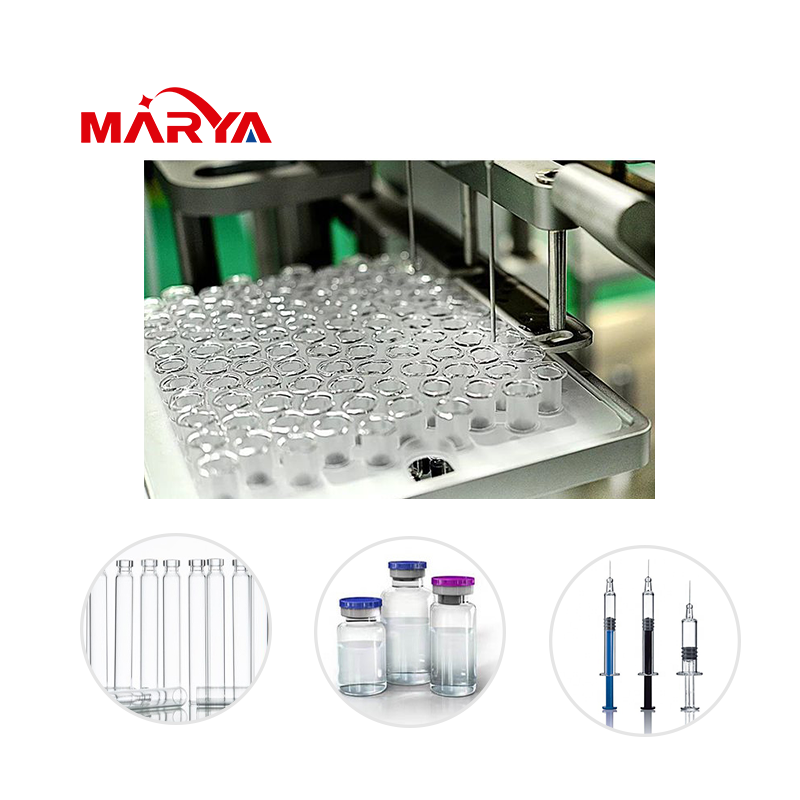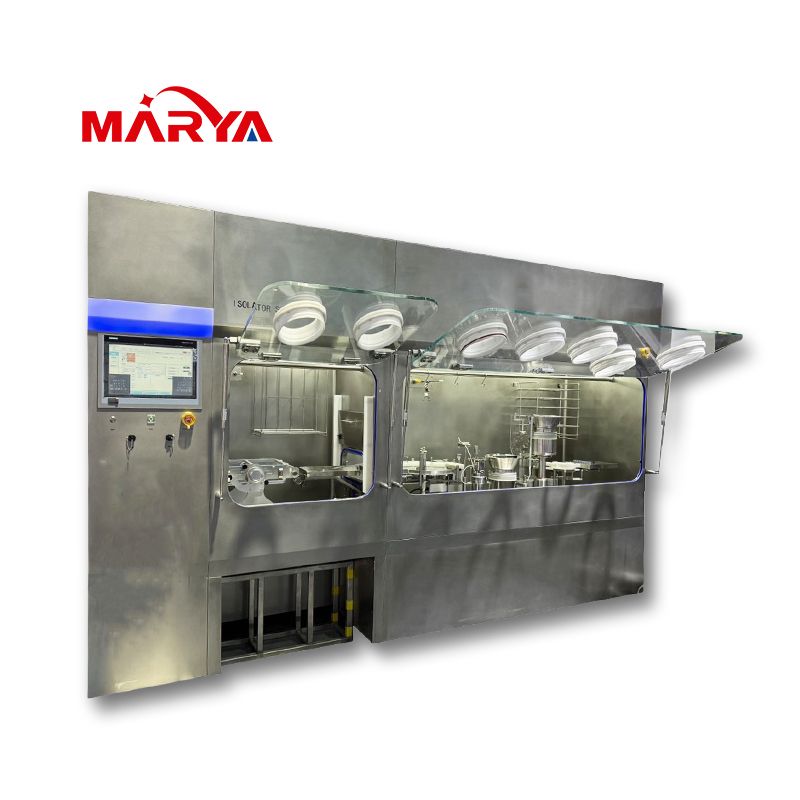Views: 0 Author: Site Editor Publish Time: 2025-07-02 Origin: Site






Aseptic vial filling and sealing systems are used to package sensitive products like vaccines, drugs, and cosmetics, ensuring that the product inside remains sterile and uncontaminated from filling to sealing. These systems prevent microbial contamination, which is especially critical for products such as vaccines and biologics that are vulnerable to contamination. Pharmaceutical companies, biotech firms, and cosmetic brands rely on aseptic systems to preserve product quality and safety. Using the right aseptic system ensures compliance with strict regulations, as failure to meet these standards can lead to product recalls, fines, and damage to a company’s reputation.
Aseptic Techniques for Sterility
Aseptic filling refers to the process of filling containers (vials, syringes, etc.) with a sterile product, in a controlled, sterile environment, to avoid contamination. Aseptic techniques prevent the introduction of harmful microorganisms during the process. These techniques include sterilizing the product, the container, and even the air around the filling machine.
Aseptic vs. Non-Aseptic Filling
Aseptic filling involves the use of sterilization methods for both the product and the containers, unlike non-aseptic filling, which may involve less stringent measures and can expose the product to potential contaminants. In non-aseptic filling, the vials or bottles are not sterilized before filling, which is not suitable for products requiring long shelf life or safe usage in sensitive conditions.
Pharmaceutical and Biotech Industries
Aseptic vial filling is critical in these industries as injectable drugs, vaccines, and biologics are highly sensitive to contamination. Even slight contamination can lead to serious health risks, so maintaining sterility is a fundamental aspect of production.
Sterilization
Before the filling process begins, vials and containers undergo sterilization using methods like autoclaving, dry heat sterilization, or gas sterilization. The environment around the filling system is also sterilized using laminar flow hoods and HEPA (High-Efficiency Particulate Air) filters.
Filling Process
During filling, the sterilized product is dispensed into vials. Automated filling machines are equipped with precise mechanisms, such as volumetric pumps or weight-based systems, to ensure accurate fill volumes. This step is essential for maintaining proper dosages, which is critical in pharmaceutical applications.

Sealing
After filling, the vials are sealed using crimping, capping, or induction sealing methods. These techniques ensure that the product is securely enclosed, preventing contamination or leakage. Crimping involves using a machine to firmly attach a metal cap to the vial, while induction sealing uses heat to create a hermetic seal.
Maintaining Sterile Conditions
Throughout this process, maintaining a sterile environment is critical. The system typically operates in a clean room or an aseptic processing environment, and machines are designed to minimize human intervention to reduce the risk of contamination.
Vial Preparation
Before the product is filled, vials undergo a cleaning process to remove any contaminants or debris. This is often done using a combination of water, air, and sterilizing agents.
Filling Technologies
Filling technologies range from volumetric pumps to peristaltic pumps and weight-based systems. These systems ensure that the correct amount of product is dispensed into each vial, which is vital for maintaining product consistency.
Sealing Techniques
Sealing ensures that the product remains sterile after filling. Different methods, such as crimping, capping, and induction sealing, ensure the vial is tightly closed, preventing microbial contamination and protecting the product from environmental factors.
Sterilization Methods
Sterilization techniques like steam sterilization, gas sterilization (e.g., using ethylene oxide), and UV sterilization are used to eliminate any bacteria, viruses, or fungi present on the vials or in the environment. Sterilization ensures that all elements involved in the filling and sealing process are completely free from contaminants.
Maintaining Product Integrity
The pharmaceutical industry relies heavily on aseptic vial filling systems to maintain the integrity of drugs and vaccines. Aseptic processing ensures that sensitive products are not compromised by contamination, which could result in ineffective or harmful treatments.
Ensuring Safety and Efficacy
Aseptic techniques guarantee that drugs retain their safety and efficacy, which is essential for patient health. Contamination could not only render drugs ineffective but could also introduce harmful bacteria into the bloodstream, causing severe health risks.
Regulatory Compliance
Regulatory bodies, such as the FDA and EMA, require that pharmaceutical manufacturers adhere to strict aseptic standards to ensure product quality and safety. Aseptic vial filling and sealing systems help meet these standards and pass inspections, ensuring that products can be legally sold and distributed.
Contamination Risks
A failure to maintain aseptic conditions during the filling and sealing process can lead to microbial contamination. This could result in the growth of harmful bacteria, which can spoil the product or cause serious health issues for consumers.
Regulatory Consequences
If a company does not meet aseptic processing standards, they risk violating regulatory guidelines. This could result in fines, recalls, or even the suspension of production. Companies may also face long-term damage to their reputation.
Consumer and Patient Harm
If contamination occurs, patients may suffer from infections or adverse reactions, which could lead to legal liability for the company. This is especially critical in the pharmaceutical and biotechnology sectors, where the consequences of contamination can be life-threatening.
Integrated Process
A complete aseptic vial filling and sealing system integrates the entire process from sterilization to filling and sealing, ensuring that each step is closely monitored for sterility. The integration of these components allows for smoother operations and reduces the chance of contamination.
Automated and Semi-Automated Options
Automation is key to increasing throughput and maintaining consistent sterility. Fully automated systems can run continuously with minimal human intervention, while semi-automated systems may require some manual operations but still benefit from automated assistance in critical areas.
Customization for Different Product Types
Aseptic systems can be customized to handle different vial sizes, filling volumes, and product types. For example, the system may be adjusted to handle liquid pharmaceuticals, vaccines, or biologics, each of which requires unique filling and sealing considerations.
Real-Time Monitoring and Control
Modern systems feature real-time monitoring tools to track temperature, pressure, and sterility throughout the process. These systems help ensure that any deviations from the set parameters are quickly detected, allowing for immediate corrective actions.
Automatic Changeover for Different Vial Sizes
Many advanced aseptic vial filling and sealing systems allow for automatic changeovers, which reduce the time spent manually adjusting machines for different vial sizes or product types. This flexibility is especially useful in environments that require fast production turnaround times.
User-Friendly Interfaces and Software
Modern aseptic systems come with intuitive software interfaces that allow operators to easily monitor and control the filling and sealing process. These interfaces typically offer data analytics, real-time alerts, and historical data tracking to optimize performance and ensure compliance.

Manual Systems
Manual systems are typically used in smaller-scale operations where automated solutions may not be cost-effective. While labor-intensive, these systems can still maintain sterility with proper procedures and are suitable for low-volume production or high-variability batches.
Automated Systems
Automated systems are preferred in high-volume production as they reduce the need for human labor, increase throughput, and minimize the risk of contamination. These systems are highly efficient, reliable, and capable of handling larger quantities of products with consistent quality control.
Semi-Automated Systems
Semi-automated systems offer a balance between manual labor and full automation. They provide automation in critical areas such as filling or capping but still require some manual intervention for set-up or changeovers.
Continuous Aseptic Filling
Continuous systems are used for high-volume production and can fill vials without stopping the process. These systems are highly efficient, minimizing downtime and maximizing throughput.
Batch Aseptic Filling
Batch systems fill a specific number of vials in one go. They are ideal for smaller production runs or products with varying formulations but may require more downtime between batches for cleaning and sterilization.
Choosing Between Continuous and Batch Systems
The choice between continuous and batch processing depends on production volume, product variety, and flexibility requirements. Continuous systems are suitable for large-scale production, while batch systems offer flexibility for different product types or smaller batches.
Aseptic vial filling and sealing systems are integral to producing high-quality, sterile products across industries like pharmaceuticals, biotechnology, and cosmetics. These systems maintain product integrity, ensure compliance with stringent regulations, and reduce the risk of contamination.
By understanding the key components, choosing the right system (manual, automated, or semi-automated), and ensuring proper validation and regulatory compliance, companies can optimize their operations for both efficiency and safety.
As technology evolves, innovations in automation, AI, and sustainability are making aseptic vial filling and sealing systems more efficient, cost-effective, and environmentally friendly, helping manufacturers meet growing demands while maintaining product quality and compliance.
A: Aseptic vial filling and sealing is the process of packaging sterile products in a controlled, contamination-free environment.
A: Sterility ensures the product remains free from harmful microorganisms, which is crucial for product safety and efficacy.
A: Pharmaceutical, biotechnology, cosmetics, and food industries use aseptic systems for sterile products like vaccines and serums.
A: Key components include sterilization, filling technologies, sealing techniques, and environmental control systems.
A: Automated systems use precise machinery to fill and seal vials, reducing human error and increasing production efficiency.
